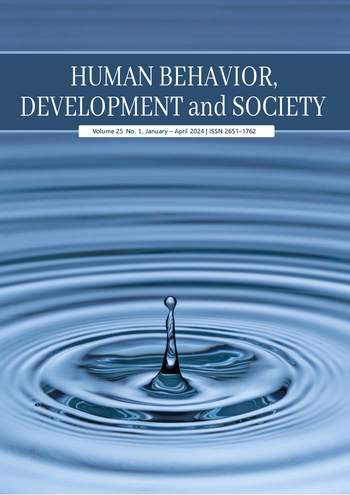Australian Teachers’ Voices on Religiosity, Spirituality, and Their Link to Job Satisfaction: Qualitative Data – Part Two
Main Article Content
Abstract
This paper is the second of a two-part report on a mixed methods study that examined the job satisfaction of teachers who worked in faith-based schools. In part one (Vodéll, 2023), 11 independent variables were identified through quantitative data analysis that impacted the dependent variable of overall job satisfaction (OJS). This led to the development of a model illustrating the factors influencing OJS. In part two, the teachers’ voices are recorded from an unframed perspective. Qualitative data were collected from a sample that consisted of nine faith-based schools in Australia. A thematic analytical approach was applied to the qualitative data (N = 94), and it was found that three major themes emerged as having a major impact on OJS: People, Processes, and Purpose for Teaching. The data from both sources was then triangulated to integrate the findings using a convergent design process. It was found that religiosity impacted OJS directly and indirectly via the mediating element of spirituality. Also, spirituality itself indirectly influenced OJS via the purpose-for-teaching element. Finally, the data indicated that OJS increased when there were positive relationships (students and colleagues) and perceived organisational efficiency within the workplace.
Article Details

This work is licensed under a Creative Commons Attribution-NonCommercial-NoDerivatives 4.0 International License.
Copyright: Asia-Pacific International University reserve exclusive rights to publish, reproduce and distribute the manuscript and all contents therein.
References
Bell, B., & Taylor, S. (2001, January 1). A rumor of angels: Researching spirituality and work organizations [Paper presentation]. Academy of Managment Proceedings, USA. https://doi.org/10.5465/apbpp.2001.6133594,
Braun, V., & Clarke, V. (2021). Thematic analysis: A practical guide. Sage Publications.
Corbin, J., & Strauss, A. (2008). Basics of qualitative research (3rd ed.). Sage Publications.
Creswell, J. W., & Clark, V. L. (2018). Designing and conducting mixed methods research (3rd Ed.). Sage Publication.
Downey, M. J. (2006). Experiences of teachers' daily work which noursh and sustain the spirituality of lay teachers in Catholic high schools [Doctoral dissertation, Australian Catholic University]. Virginia. https://acuresearchbank.acu.edu.au/item/89qw5/experiences-of-teachers-daily-work-which-nourish-and-sustain-the-spirituality-of-lay-teachers-in-catholic-high-schools
Glaser, B. G. (2007). Naturalist Inquiry and grounded theory. Historical Social Research / Historische Sozialforschung, Supplement, 19, 114–132. http://www.jstor.org/stable/40981073
Hackney, C. H., & Sanders, G. S. (2003). Religiosity and mental health: A meta–analysis of recent studies. Journal for the Scientific Study of Religion, 42(1), 43–55. https://doi.org/10.1111/1468-5906.t01-1-00160
Hill, P. C., & Pargament, K. I. (2003). Advances in the conceptualization and measurement of religion and spirituality: Implications for physical and mental health research. The American Psychologist, 58(1), 64–74. http://proquest.umi.com/pqdweb?did=319268991&Fmt=7&clientId=38858&RQT=309&VName=PQD
Hudson, K. (2007). Spiritual but not religious - A phenomenological study of spirituality in the everyday lives of younger women in contemporary Australia [Doctoral dissertation, Murdoch University]. Perth. http://wwwlib.murdoch.edu.au/adt/browse/view/adt-MU20070711.105502
James, W. (1958). The varieties of religious experience: A study in human nature. New American Library.
King, J. E., & Crowther, M. R. (2004). The measurement of religiosity and spirituality: Examples and issues from psychology. Journal of Organizational Change Management, 17(1), 83–101. http://proquest.umi.com/pqdweb?did=579613141&Fmt=7&clientId=38858&RQT=309&VName=PQD
Koenig, H. G. (2007). Religion, spirituality and medicine in Australia: Research and clinical practice. Medical Journal of Australia, 186(10), S45–S46.
Lester, P. E. (1987). Development and factor analysis of the Teacher Job Satisfaction Questionnaire (TJSQ). Educational and Psychological Measurement, 47(1), 223–33. https://catalogue.nla.gov.au/catalog/5462664
Neff, J. A. (2006). Exploring the dimensionality of “religiosity” and “spirituality” in the Fetzer multidimensional measure. Journal for the Scientific Study of Religion, 45(3), 449–459. https://doi.org/10.1111/j.1468-5906.2006.00318.x
Piedmont, R. L., Werdel, M. B., & Fernando, M. (2009). The Utility Of The Assessment Of Spirituality And Religious Sentiments (ASPIRES ) scale With Christians And Buddhists In Sri Lanka. Research in the Social Scientific Study of Religion, 20, 131–143. https://doi.org/10.1163/ej.9789004175624.i-334.42
Roundy, P. T. (2009). ‘Every man’s work shall be made manifest’: Religious callings in the age of organizational spirituality. Journal for the Renewal of Religion and Theology, 5, 1–15. https://papers.ssrn.com/sol3/papers.cfm?abstract_id=2635953
Sander, W. (2017). Religion, religiosity, and happiness. Review of Religious Research, 59(2), 251–262. https://doi.org/10.1007/s13644-017-0285-6
Sholihin, M., Hardivizon, H., Wanto, D., & Saputra, H. (2022). The effect of religiosity on life satisfaction: A meta-analysis. Hervormde Teologiese Studies, 78(4), 1–10. https://doi.org/10.4102/hts.v78i4.7172
Slater, W., Hall, T. W., & Edwards, K. J. (2001). Measuring religion and spirituality: Where are we and where are we going? Journal of Psychology and Theology, 29(1), 4–21. http://proquest.umi.com/pqdweb?did=72516917&Fmt=7&clientId=38858&RQT=309&VName=PQD
Vodéll, M. (2023). Religiosity, spirituality and their relationship to job satisfaction: Quantitative data from Faith-based Schools in Australia–Part One. Human Behavior, Development and Society, 24(3), 91–102. https://so01.tci-thaijo.org/index.php/hbds/article/view/269881/175100
Zullig, K. J., Ward, R. M., & Horn, T. (2006). The association between perceived spirituality, religiosity, and life satisfaction: The mediating role of self-rated health. Social Indicators Research, 79(2), 255–274. https://doi.org/10.1007/s11205-005-4127-5.


